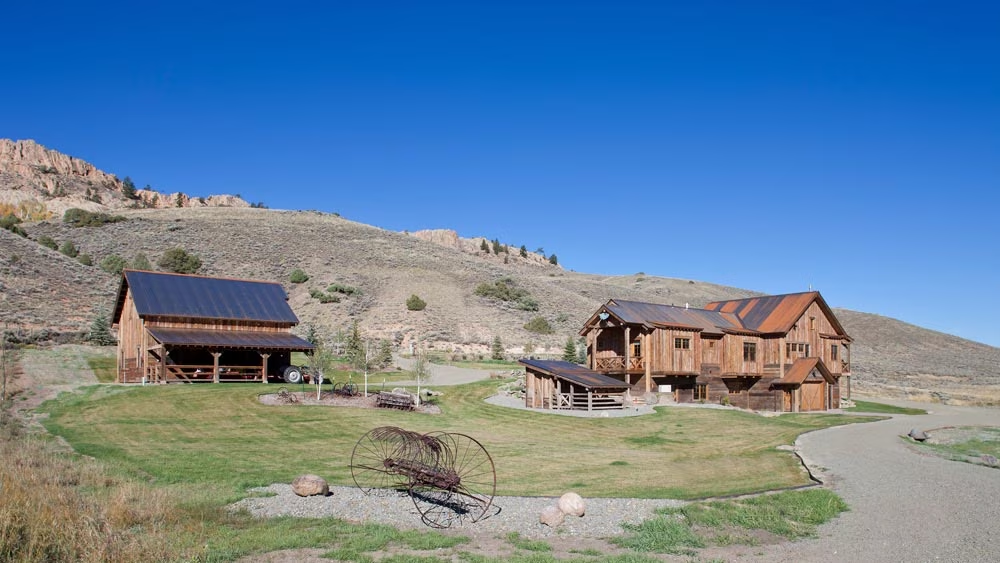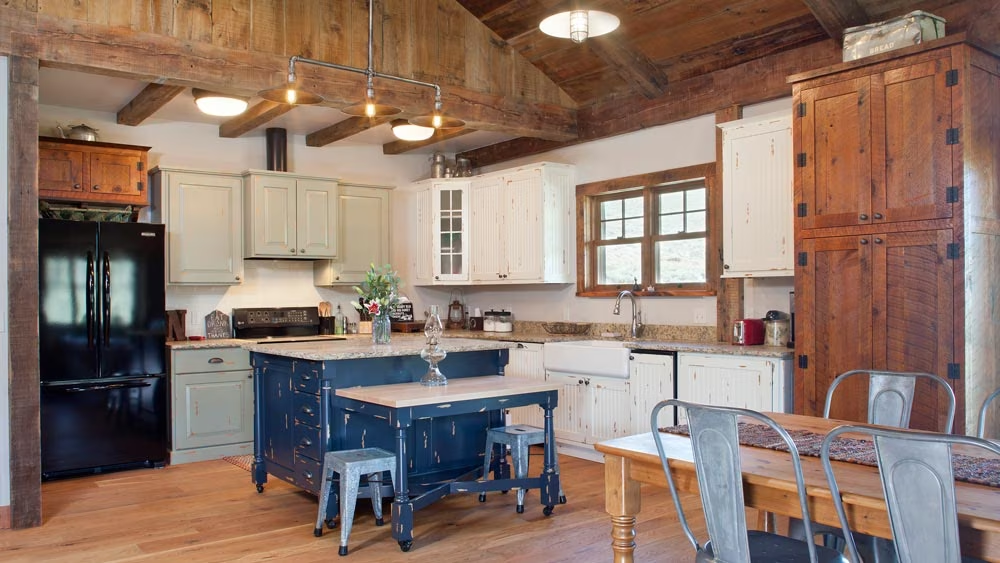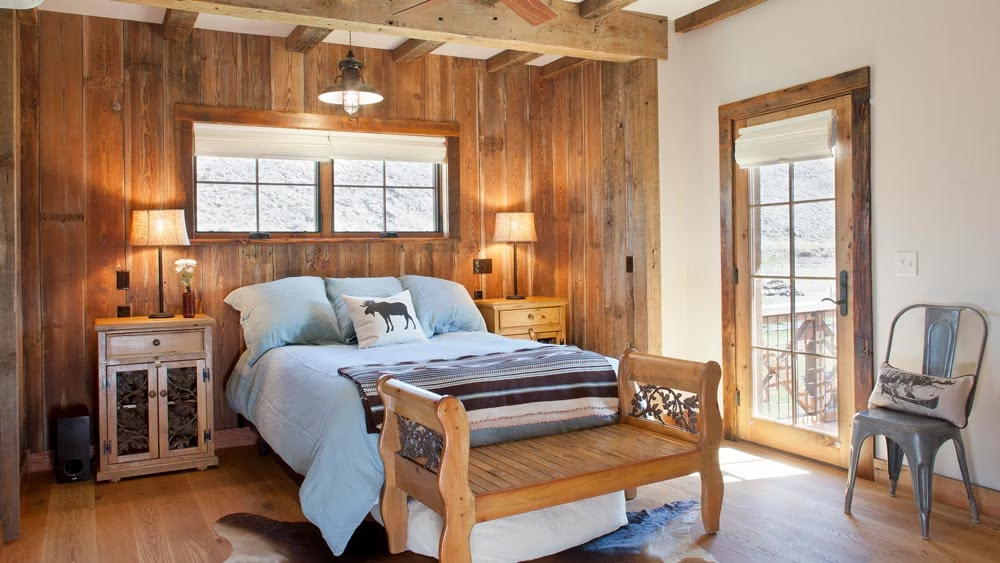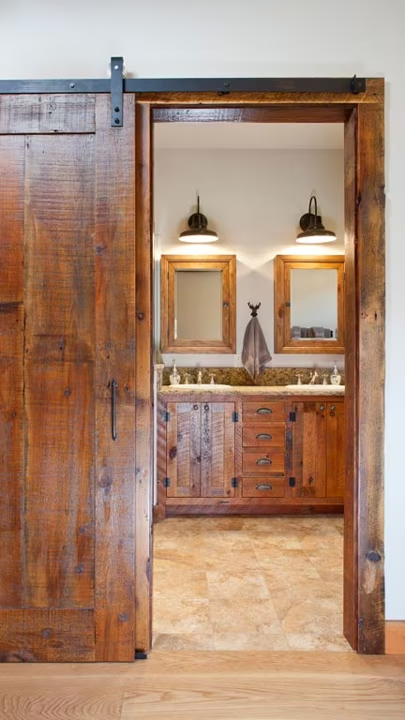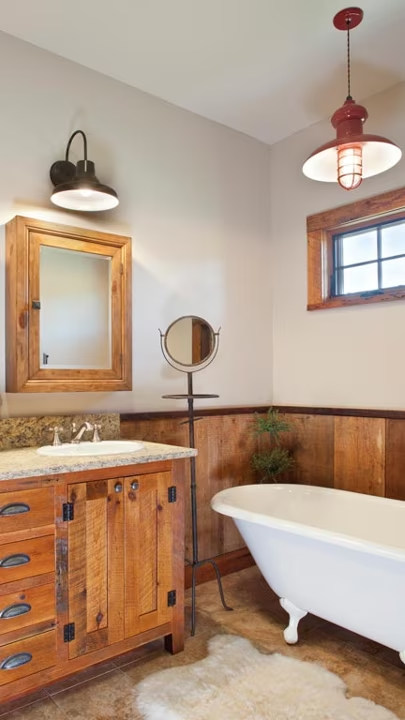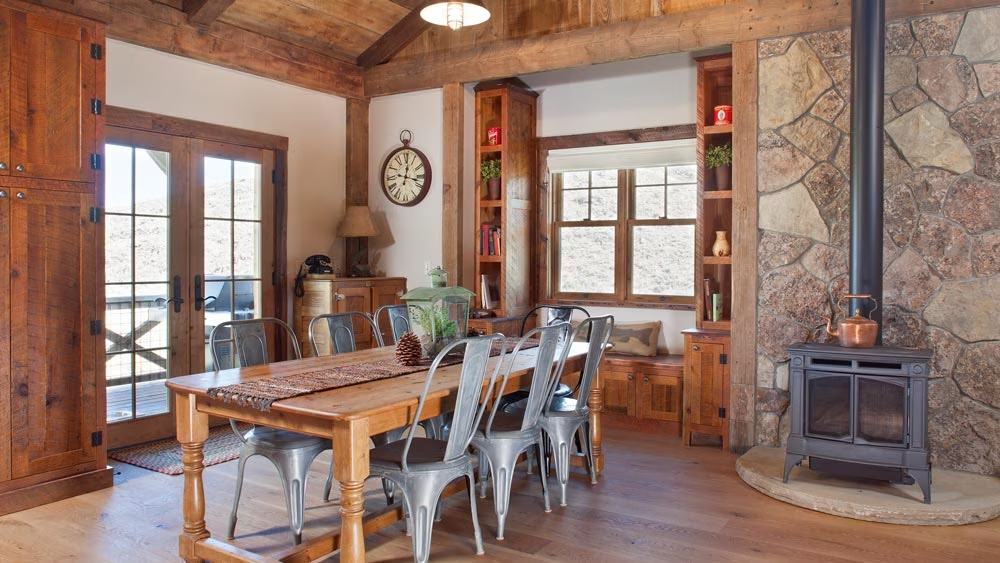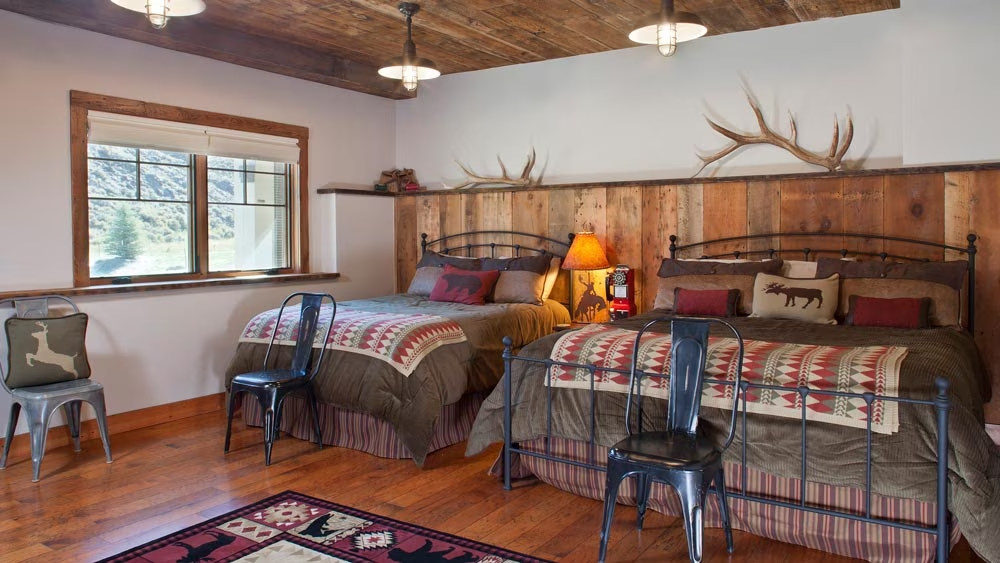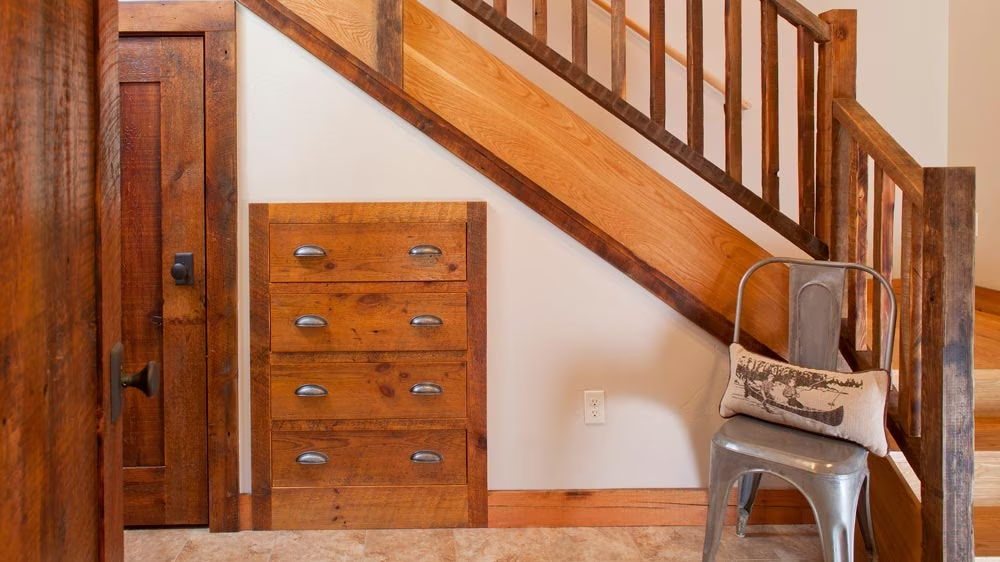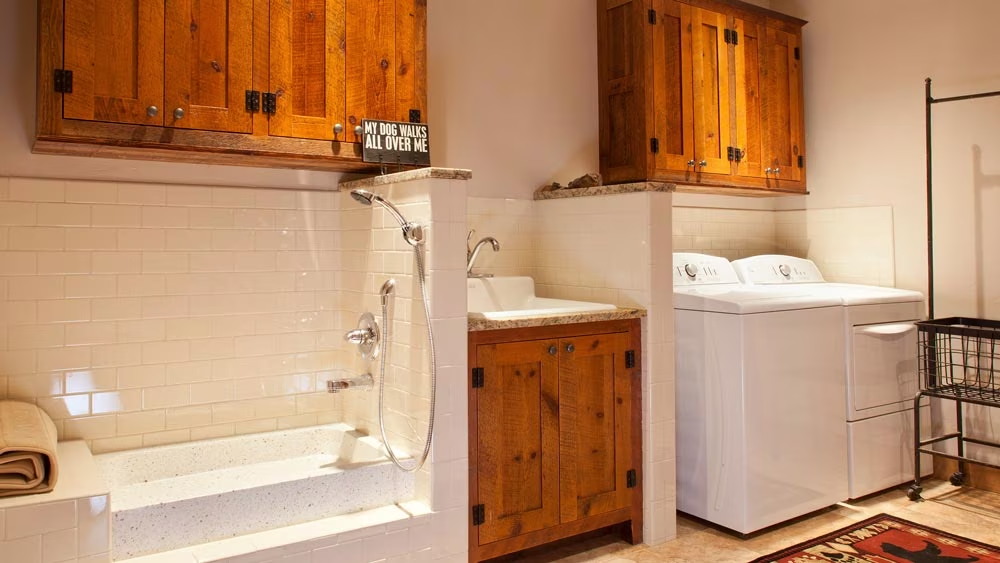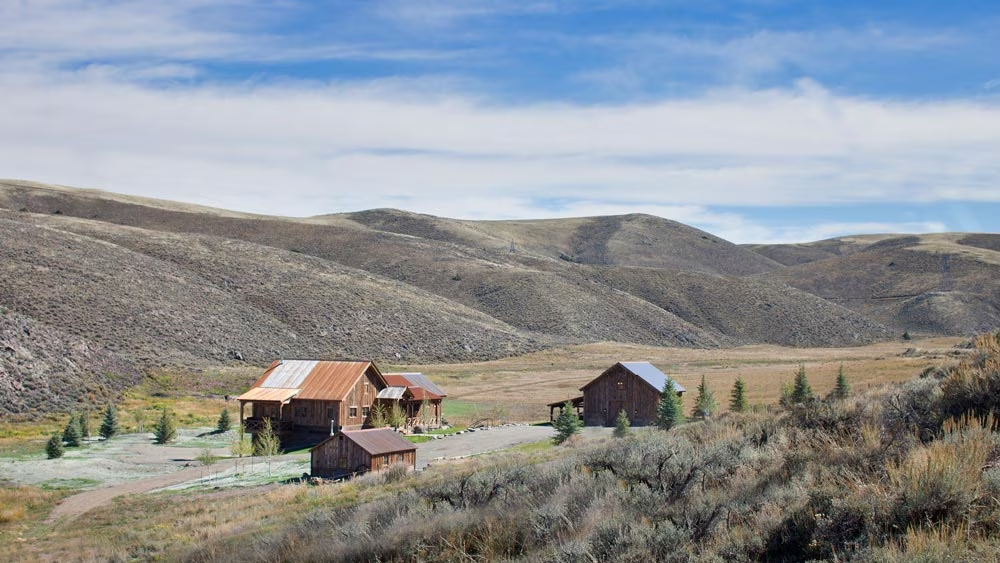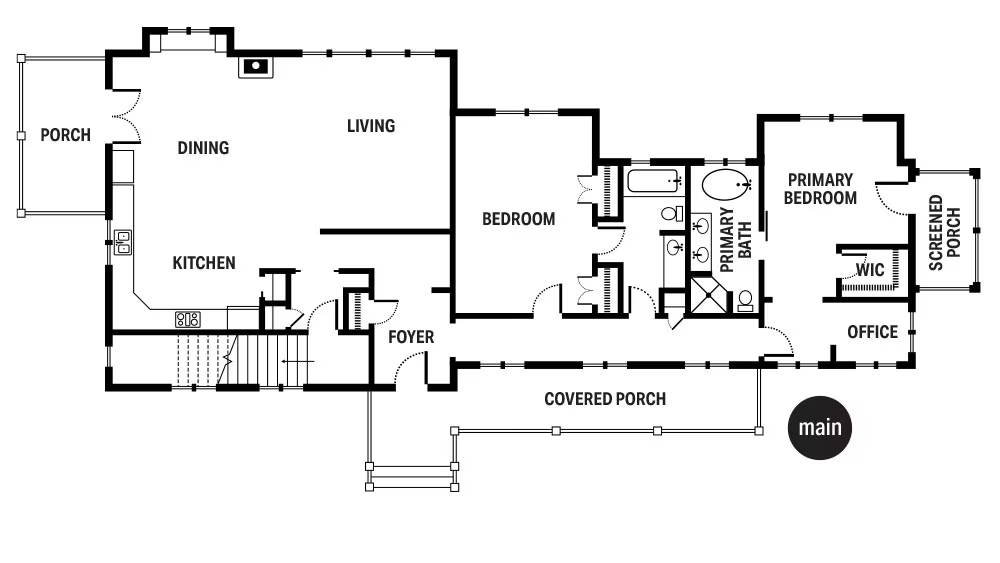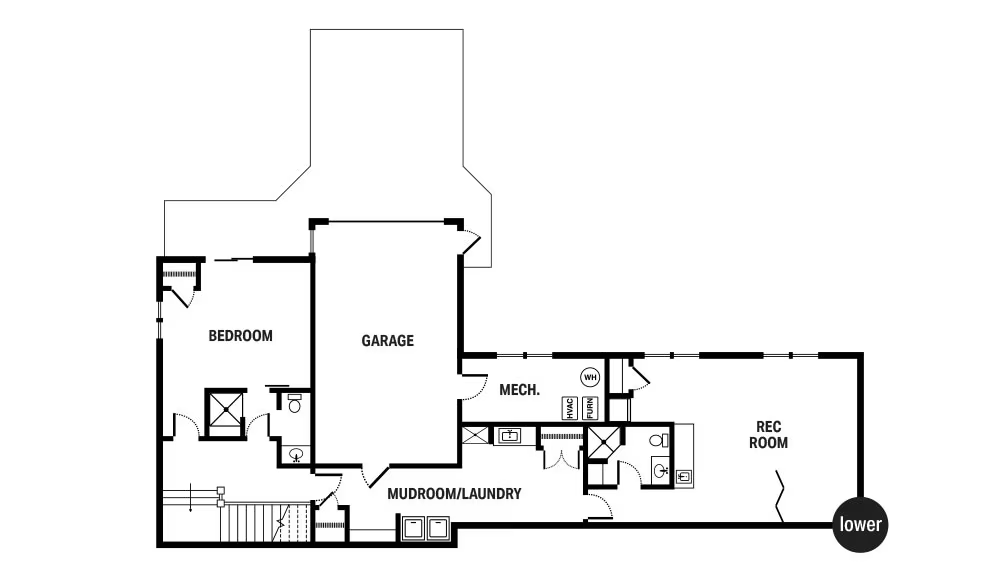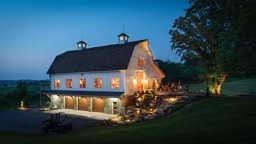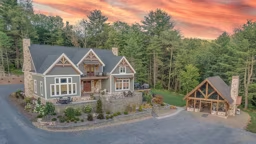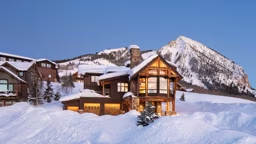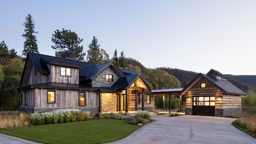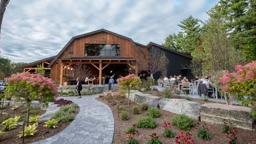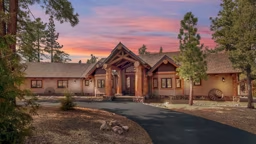In and around the former mining town of Gunnison, Colorado, there’s a palpable respect for bygone days. In the eclectic downtown, clapboard storefronts house hip craft breweries and one-of-a-kind boutiques, serving as a reminder of the area’s boom-to-bust-to-boom-again history. From there, a single highway runs south of the city, tracking along desert-like vistas, which include a series of granite outcroppings that give off a decidedly Wild West feel.
Against this sepia-toned backdrop lies a stretch of land known to locals as Odom Ranch. Established in the 1870s, the sprawling property — bordered by flat pastureland on one side and funky rock formations on the other — served as a working ranch for decades. When the last owner passed away in 2010, leaving no heirs behind, the homestead was suddenly a veritable time capsule, filled with an array of antiques and vintage finds, including Art Deco furniture and WWII uniforms. “It was like someone had packed a suitcase, walked out the door and never came back,” shares Gunnison-based architect Jody Reeser.
Two years later, the untouched property was purchased by a growing family who hoped to use the ranch as a mountain getaway while simultaneously ensuring it stayed grounded to its historic roots. They called on Jody to breathe new life into the property’s collection of ramshackle buildings, which included a home, a barn and an outbuilding. While the hope was that some of the original structures could be salvaged, neither the main cabin nor the barn could be saved. Only the small outbuilding survived.
A fresh start was in order. But in this case, moving forward required looking back. “Our claim to fame is that we’re one of the coldest towns in the nation,” Jody says of Gunnison. “The owners were very cognizant of the history of the ranch, and the goal from the beginning was for the home to look old but function new. They wanted it to look like a little ranch home but have all the benefits of a modern building.”
Once the owners settled on timber frame construction, Jody took a function-first approach, designing an open floor plan with a kitchen, living and dining area that calls to mind a one-room cabin where life happens in a single, shared space. A primary suite on the main floor, along with a guest bedroom, allows the home to function as a single-level home, while a walk-out basement, added to accommodate the grandkids, expands the living area with an additional pair of bedrooms, plus a seating area and wet bar.
Focused on livable design, Jody emphasized the structure’s efficiency. To bolster the insulation provided by the structural insulated panels that clad the timber frame, Jody incorporated a pre-manufactured truss system into the roof, which provided an R-value of 60. She also added in-floor radiant heat, with heat tubes set in 1.5-inch concrete flooring to create thermal mass. “There are a lot of layers of high-tech modern building materials, but we used them in a way that wouldn’t take away from that historic cabin feel,” Jody explains.
Because of the harsh climate, she had to think carefully about balancing the need for a tight building envelope with the desire to capture the views of the rock formations to the north (the coldest side of the home). “We were really thoughtful about window placement,” explains Jody.
Those same rocks influenced the home in two other ways: First, lightning rods had to be added to the roof, as the natural topography attracts intense lightning during summer storms. Second, the potential for flash flooding posed by the rocks required a landscaping plan that diverted the water away from the property’s buildings. “We definitely had to take the natural elements and influences into account,” affirms Jody.
Consideration of the surrounding environment drove the exterior design and material selection, too. “We didn’t want people to drive by and see this big ski home,” says Jody. “There are no crazy dormers or intricate valleys.” She leaned into a simple, angular shape befitting a ranch home, and the materials were curated to ensure the 21st-century home was in keeping with a 19th-century aesthetic. “Our starting point was reclaimed timbers,” she says of the home’s frame and siding, which was handled by local Blue Valley Carpentry.
While most of the wood used in the home is Douglas fir, color rather than species, drove the design. “On the outside, we wanted that heavier base feel, which is what you would traditionally have on an older cabin, so we went with darker grays, then we added the lighter brown color and texture from the floor line up,” she explains. Placing the timbers in a variety of orientations — horizontal on the bottom, vertical up top — mimics the built-over-time look of an original homestead. Next, Jody incorporated rusted materials for the roof to help the cabin blend into the dusty backdrop.
Mirroring the exterior, the theme inside the home is “reclaimed everything,” says Jody with a laugh. Wood flooring made from standing-dead timbers sourced from Wisconsin overflow with character. “It has all the advantages of a comfortable, modern floor but has the extra layer of richness and depth from being antique — a little bug hole here, a nail mark there,” Jody observes. Though all of the lighting and plumbing fixtures are new, you’d never guess it. “We had to make sure everything functioned new but had a look that was appropriate to the era we were going for,” Jody says. Even the window trim has a story behind it, made from reclaimed snow barrier fencing from the Rocky Mountain region.
Inside and out, the saying about history repeating itself holds true here — and to Jody, that’s the highest praise.
“One of the stories the owners like to tell is that after they had moved in, there was a small brush fire on the property and one of the firefighters who helped extinguish it actually said, ‘Thank God it didn’t take out the old house!’” Jody shares. “Here you have this house that’s less than a year old, and even the locals thought it was the historic ranch house. That was the ultimate compliment.”
Home Details
Square Footage: 3,250
Bedrooms: 4
Baths: 4
Architect: J Reeser Architect LLC




